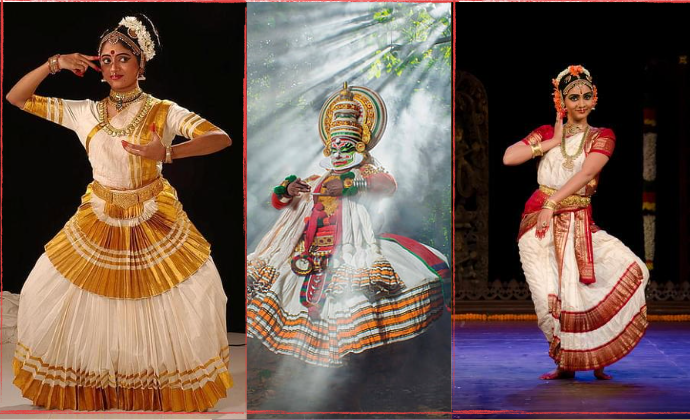Nritya Vidya refers to the study and practice of Indian classical dance, a highly expressive and intricate art form that has evolved over centuries. Rooted in ancient Indian culture, it combines elements of music, rhythm, storytelling, and spirituality, embodying a perfect harmony between body, mind, and soul. Indian classical dance forms are diverse, reflecting the cultural richness of different regions across the subcontinent.
Each dance form has its unique style, techniques, and aesthetic principles, but they all share some common elements, such as:
- Nritta: The pure, abstract, and rhythmic aspect of dance, focusing on the execution of body movements, postures, and footwork in sync with the tala (rhythmic cycle). Nritta does not convey any specific meaning or emotion; it is a display of the dancer’s technical prowess and grace.
- Nritya: The expressive aspect of dance, involving the portrayal of emotions, stories, and themes through facial expressions, hand gestures (mudras), and body movements. Nritya is based on the concept of abhinaya, which translates to “expression” or “acting,” allowing the dancer to communicate with the audience on an emotional level.
- Natya: The dramatic aspect of dance, combining both nritta and nritya to convey a narrative or story, often based on mythology, spiritual themes, or historical events. Natya involves the interplay between characters, dialogues, and emotions, making it a complete theatrical experience.
Some of the prominent Indian classical dance forms include:
- Bharatanatyam: Originating from Tamil Nadu in South India, Bharatanatyam is known for its precision, grace, and geometric movements. It is characterized by its linear and angular poses, complex footwork, and expressive abhinaya.
- Kathak: A North Indian dance form with roots in Hindu temples and Mughal courts, Kathak is characterized by fluid, graceful movements, swift pirouettes, intricate footwork, and expressive storytelling. Kathak dancers often perform to the accompaniment of Hindustani classical music.
- Kuchipudi: Originating in Andhra Pradesh, Kuchipudi is a vibrant and dynamic dance form that combines graceful movements, expressive gestures, and intricate footwork. It is known for its dramatic narrative style, featuring both male and female characters.
- Odissi: A dance form from Odisha, characterized by its fluid, sculptural movements, and unique postures that resemble ancient temple sculptures. Odissi is known for its graceful and lyrical style, with an emphasis on torso movements and delicate hand gestures.
- Manipuri: Hailing from Manipur in Northeast India, this dance form is characterized by its smooth, flowing movements, intricate hand gestures, and elaborate costumes. Manipuri often portrays themes based on the life of Lord Krishna and his consort Radha.
- Mohiniyattam: A dance form from Kerala, Mohiniyattam is known for its graceful, swaying movements, gentle facial expressions, and subtle storytelling. The term “Mohiniyattam” translates to “dance of the enchantress,” reflecting the feminine elegance and sensuality of this dance form.
- Kathakali: Another dance form from Kerala, Kathakali is a highly stylized and dramatic dance-theater characterized by its elaborate costumes, vibrant makeup, and powerful facial expressions. Kathakali dancers undergo rigorous training to master the complex gestures, eye movements, and body control required for this form.
Indian classical dancers undergo extensive training under the guidance of a guru to master the techniques, repertoire, and nuances of their chosen dance form. They learn the intricate grammar of body movements, hand gestures, and facial expressions



Leave a Reply